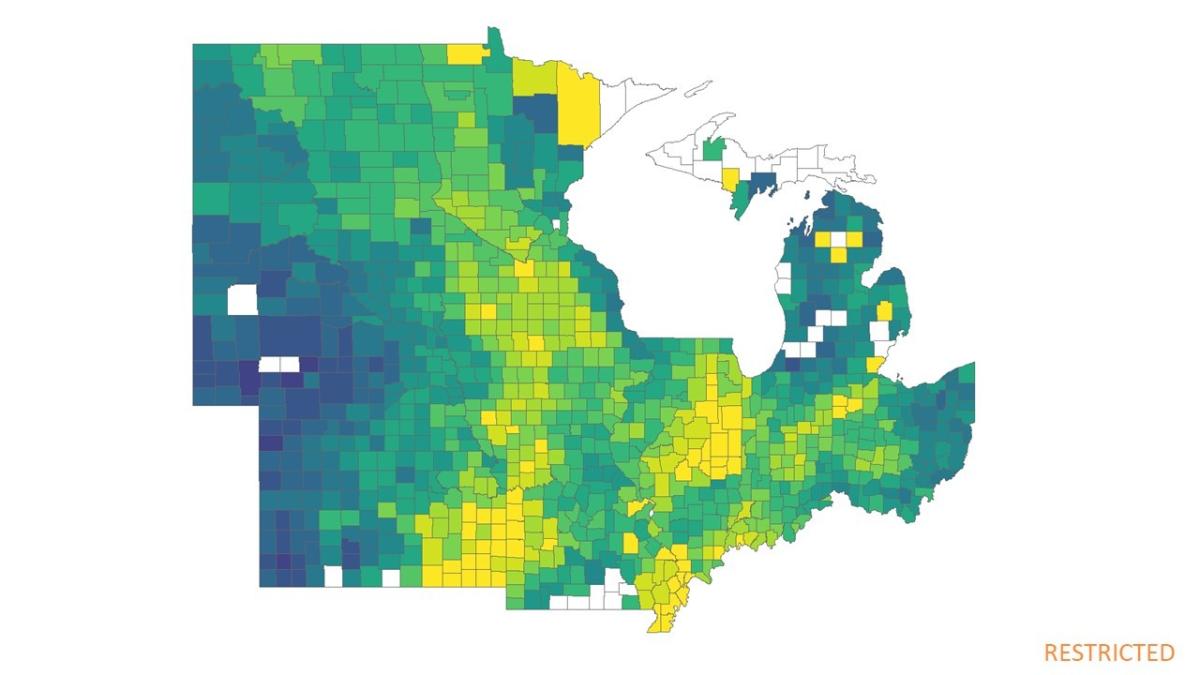So, You Want to Build a Soil Carbon Market for Agriculture?
By Jeffrey Seale, Environmental Stakeholder, Strategy Manager, Bayer Crop Science

If I were to write a memoir, it would definitely be entitled, I Didn’t Intend to Be Here. When I look back over my career, it’s taken unintentional twists and turns. Entering university, I was going to be a heart surgeon, until I wasn’t. Leaving graduate school, my sights were set on becoming a university professor, until I found myself in industry. As a trained biochemist I now find myself working on one of society’s most important problems, climate change. When I think about those unforeseen changes, I often think of one of my favorite Emily Dickinson lines, “dwell in possibility.” Approaching science and life with that mantra can lead to exciting things.
Such is the case with the announcement Bayer made last month about taking the next steps in forming a carbon market for agriculture. The announcement was the culmination of more than 4 years work by a group of outstanding scientists and collaborators that started out with a very focused goal of accounting for carbon emissions on Bayer’s seed production farms – part of a strategy to help eliminate the company’s carbon footprint in the larger effort to meet the company goals of creating a carbon zero future for agriculture. As we developed that work, we realized the potential far beyond our own walls and now are set to begin to help farmers around the world benefit economically from helping to remove carbon from the air and store it in their soils.
The benefits of soil carbon are complex due to the dynamic nature of a living ecosystem like soil. At Bayer, we believe that complexity should not inhibit the desire to harness the potential of working lands to sequester carbon, improve health of soils, and increase the resilience of farmers working to feed a growing population while improving our environment.
As our work at Bayer expanded, we were guided by four key principles: farmer-focused, science-based, transparent, and third-party validation.
Farmer-focused. One of the key barriers to more broad scale adoption of agronomic practices that remove carbon and improve soil health is the high cost of implementation versus the low economic return for the carbon removals. Our approach looks to remove as much cost out of the system as possible to return the economic benefits to farmers. If the economics do not work for farmers, then they cannot participate in helping remove carbon from the atmosphere. If agriculture (the second largest contributor to greenhouse gas emissions) cannot be part of the solution to climate change, there will not be a viable solution to keeping global temperature increases below 2°C. Farmers must always be at the forefront as we continue our work down this path.
Science-based. The credibility of greenhouse gas emissions reductions is founded on rigorous, peer-reviewed science. Bayer’s soil carbon quantification is based on a USDA-approved biogeochemical model, DNDC, to generate emissions factors for the application of a given set of agronomic practices. Using a widely accepted model was the first step in generating a rigorous approach. The second step was the submission of our work for scientific scrutiny and publication in a peer-reviewed paper. Our soil carbon methodology was recently published in the Journal of Cleaner Production after undergoing a few rounds of revision to take into account comments from the reviewers. This adds another layer of credibility to our carbon removal estimates.
Transparent. To add to credibility and create conditions for the widest adoption as possible, the foundation of the entire carbon accounting approach must be transparent and open for public scrutiny. It is in the transparency that we published the science behind our work as described above. Another key component of carbon emissions accounting deals with other issues around carbon removals, such as the principles of additionality, permanence, verification, and aggregation. Along with our collaborators, we wrote white papers describing our philosophy for dealing with these principles and have made them publicly available. Our approach to these principles is shared with all interested parties and also forms the basis for our last principle, third-party validation.
Third-party validation. The final contribution to the credibility of our approach relies on external validation of the entire body of work. Our transparency outlined above is necessary to give credibility to our work, but not sufficient to deliver the level of confidence in our approach that our work can make an important and valid contribution to carbon emissions removals in the ag sector. For this reason, we have been working with The Gold Standard, a globally recognized carbon emissions standards organization, to get its validation of our work, from the carbon accounting framework to the soil carbon methodology. We are currently in the middle of this process and hope to complete that work soon to add the last layer of credibility to our efforts to help establish a carbon market for farmers and the agriculture sector.
Climate change is arguably the most pressing issue of our time. While it is easy to read about current environmental disasters and feel down about our prospects for avoiding some really terrible outcomes, we must not throw up our hands and give up. Every voice matters and every action to remove carbon from the atmosphere counts. We all must do our part. Robert Kennedy once said, “And if our times are difficult and perplexing, so are they challenging and filled with opportunity.” When we dwell in possibility, we may find ourselves in places we never imagined faced with the opportunity to really make a difference.

